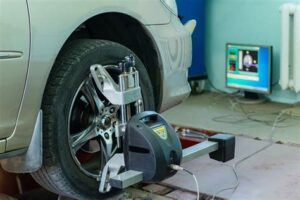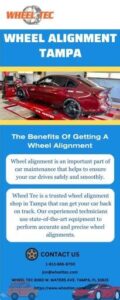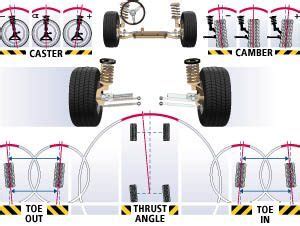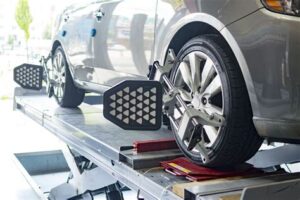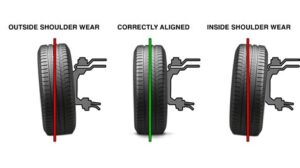Are you frustrated by your car drifting to the right even after a recent alignment? You’re not alone—this common issue can not only compromise your driving experience but also pose safety risks. In this comprehensive guide, we’ll delve into the reasons behind this annoying drift, from improper tire pressure to the role of suspension components. We’ll also provide effective solutions to help you regain control of your vehicle. Additionally, we’ll discuss when it’s time to seek professional help for persistent alignment problems, ensuring safer rides ahead. Read on to equip yourself with the knowledge necessary to tackle this issue head-on and improve your vehicle’s performance on the road.
Understanding The Causes Of Car Drifts After Alignment
When a vehicle experiences car drifts after an alignment, it can be frustrating for the driver. There are several factors that can contribute to this issue, which we will explore below.
One of the primary causes of car drifts is the misalignment of the steering and suspension geometry. Even if the alignment is performed correctly, factors such as worn-out components or incorrect adjustments can lead to a return of drift issues.
Another important consideration is the uneven wear on tires. Tires that have differing levels of wear can exert unequal forces on the vehicle, causing it to drift to one side. Regularly checking the tire condition and ensuring they are rotated as per the manufacturer’s recommendations can help mitigate this issue.
Car drifts can also be influenced by road conditions. Driving on uneven or sloping surfaces can create an illusion of drift, leading the driver to feel that the car is pulling to one side. It’s essential to be aware of the road conditions, especially after alignment work has been done.
Even environmental factors like wind can impact vehicle handling. Strong gusts can push a car, making it feel as though it is drifting, even when the alignment is correct. Understanding these causes can help drivers identify when a drift is a genuine alignment issue versus a temporary situation caused by external factors.
How Improper Tire Pressure Affects Car Drifts
Maintaining the correct tire pressure is crucial for optimal vehicle performance, particularly when it comes to preventing car drifts. When tire pressure is improperly adjusted, it can lead to uneven wear and poor handling, contributing significantly to the drift. Here are some key points to understand the connection between tire pressure and car drifts:
| Tire Pressure Condition | Effect on Car Handling |
|---|---|
| Under-inflated Tires | Causes increased rolling resistance, leading to poor steering response and a tendency for the car to drift. |
| Over-inflated Tires | Reduces the contact patch with the road, resulting in reduced traction and stability, making it difficult to maintain a straight line. |
In both cases, drivers may notice that their vehicle pulls to one side, indicating a potential drift issue. Regularly checking and adjusting tire pressure not only enhances safety but also optimizes handling characteristics, promoting a smoother driving experience.
The Role Of Suspension Components In Car Drifts
The suspension system of a vehicle plays a crucial role in maintaining optimal control and stability while driving. When car drifts occur, particularly to the right, it can often be traced back to issues within the suspension components. Here are some key aspects to consider:
- Alignment of Suspension Components: Proper alignment of components such as control arms, tie rods, and struts is essential. Misalignment can lead to uneven tire wear and affect steering responsiveness, causing the vehicle to drift.
- Worn Out Bushings: Suspension bushings are rubber or polyurethane components that cushion the joints between suspension parts. Over time, these bushings can wear out or degrade, leading to looseness and instability in the suspension system, which may result in car drifts.
- Damaged Shock Absorbers: Shock absorbers help control the movement of the suspension. If they are damaged or leaking, they cannot adequately dampen the effects of road bumps, causing the car to behave unpredictably and drift to one side.
- Strut and Spring Integrity: The springs and struts hold the vehicle’s weight and maintain ride height. If springs are broken or struts are faulty, it can create an imbalance, leading to a tendency for the car to drift.
- Influence of Load Distribution: Uneven weight distribution across the vehicle can impact suspension dynamics. For instance, if cargo or passengers are primarily on one side, this can lead to a situation where the car drifts towards the opposite side.
Regular inspection and maintenance of suspension components are essential to prevent car drifts. Addressing any signs of wear or damage early can help ensure a safer driving experience and maintain optimal handling characteristics.
Effective Solutions To Prevent Car Drifts To The Right
If your vehicle exhibits car drifts to the right after alignment, there are several steps you can take to address the issue effectively. Here are some solutions to help bring your car back into alignment and improve its overall handling:
- Regular Checkups: Schedule routine maintenance checks, including wheel alignment and tire rotation, to ensure all components are functioning correctly.
- Tire Pressure Monitoring: Regularly check and maintain the correct tire pressure as improper inflation can exacerbate car drifts. Always refer to your vehicle’s manual for the recommended pressure levels.
- Alignment Services: Consider visiting a qualified mechanic for precise wheel alignment services. They can diagnose and correct any alignment issues to help resolve drifting.
- Suspension Inspection: Have your suspension components inspected regularly. Worn-out parts can significantly influence the car’s handling and lead to unwanted drifting.
- Wheel Balancing: Ensure your wheels are balanced correctly. Unbalanced wheels can contribute to steering issues and car drifts.
- Continuous Monitoring: Pay attention to how your car behaves while driving. If you notice persistent drifting or unusual handling, do not ignore these signs; they could indicate more severe issues.
By implementing these solutions, you can effectively minimize the chances of your vehicle experiencing car drifts to the right, enhancing safety and driving comfort.
When To Seek Professional Help For Persistent Car Drifts
While it’s common for car drifts to occur occasionally after a wheel alignment, persistent drifting can signal that deeper issues may be at play. It’s crucial to recognize the signs that indicate it’s time to consult with a professional. Here are some key indicators:
- Consistent Drift: If your vehicle consistently drifts to the right despite multiple alignments, it may point to underlying suspension, steering, or tire problems.
- Uneven Tire Wear: Check your tires for uneven wear patterns. This could indicate misalignment or other alignment-related issues that need professional attention.
- Sudden Changes: A sudden onset of drifting, especially after hitting a pothole or curbing a tire, could suggest bent components or other damage.
- Vibrations: If you experience vibrations in the steering wheel, this could indicate an imbalance that requires professional evaluation.
- Warning Lights: Keep an eye on your dashboard for any warning lights that may indicate issues with the vehicle’s stability systems.
In these situations, it’s wise to seek the expertise of a professional mechanic who can conduct a thorough inspection and diagnose the issues accurately. Don’t hesitate to reach out for help, as early intervention can prevent more severe damage and costly repairs down the road.
Frequently Asked Questions
What causes a car to drift to the right after an alignment?
A car may drift to the right after an alignment due to uneven tire pressures, worn suspension parts, or improper alignment settings not being corrected during the process.
How can I tell if my car’s alignment is off?
Signs that your car’s alignment is off include pulling to one side, uneven tire wear, or a steering wheel that is off-center when driving straight.
Is it safe to drive a car that drifts to the right?
While it may be safe for short distances, a car that consistently drifts to the right can create hazardous driving conditions and should be addressed as soon as possible.
Can uneven tire pressure affect alignment?
Yes, uneven tire pressure can cause misalignment, as it impacts how the vehicle sits on the road and can lead to uneven tire wear and handling issues.
How often should I get my car’s alignment checked?
It’s recommended to have your car’s alignment checked at least once a year or whenever you notice that your vehicle is pulling to one side or after significant changes such as tire replacements.
What should I do if my car drifts to the right after an alignment?
If your car drifts to the right after an alignment, you should return to the service center that performed the alignment and ask them to inspect the settings, tire pressures, and suspension components.
Can road conditions affect vehicle alignment?
Yes, road conditions such as potholes, speed bumps, or hitting curbs can negatively impact your vehicle’s alignment and may lead to drifting or pulling.
